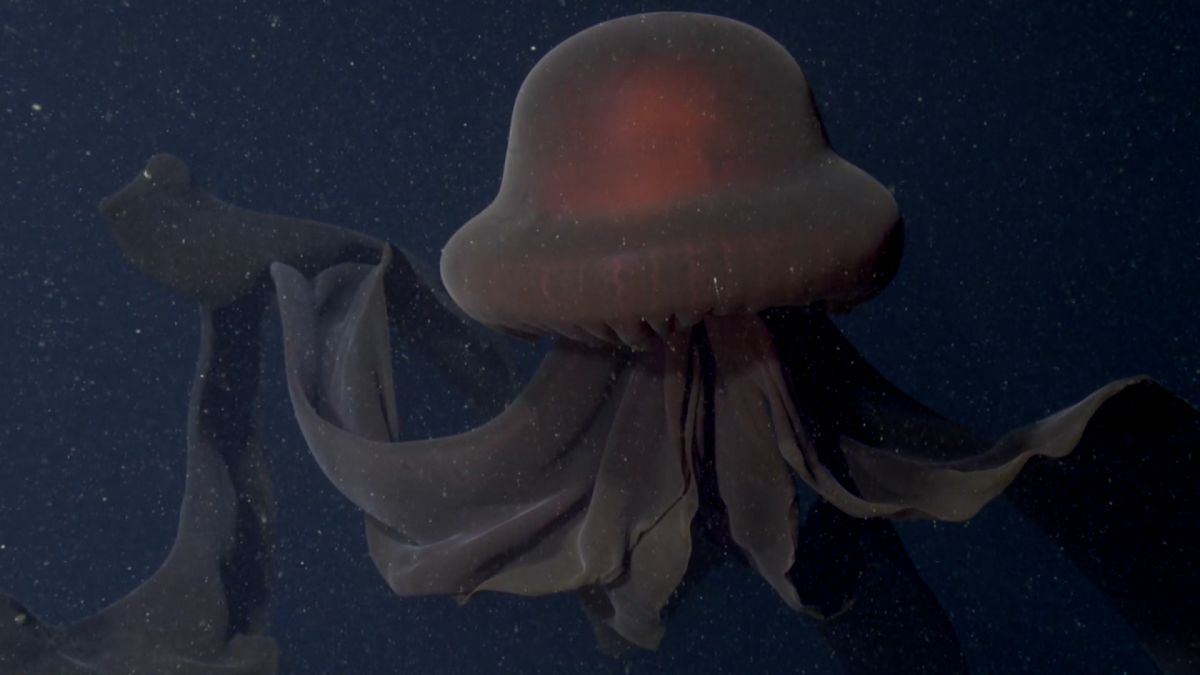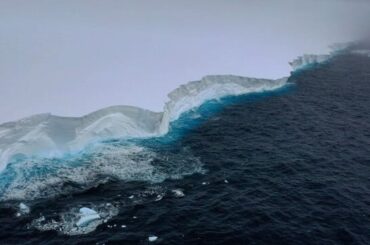The Monterey Bay Aquarium Research Institute (MBARI) captured a video of a massive phantom jellyfish. Sightings are extremely rare, with this species only being spotted nine times in thousands of dives.
In the MBARI remotely operated vehicle (ROV), Doc Ricketts spotted what the Institute describes as a “billowing crimson curtain.” This massive phantom jellyfish (Stygiomedusa gigantea) spans more than one meter (3.3 feet) and has four ribbon-like oral (or mouth) arms that can grow to be more than ten meters (33 feet) long. MBARI claims to have logged thousands of dives, but this species has only been spotted nine times.

According to MBARI, the first phantom jelly was collected in 1899, but scientists have only encountered the giant jellyfish about 100 times. Scientists did not recognize it as a new species until 1959, and very little is known about the animal even today. Except for the Arctic, the majestic deep-sea creature appears to have a global distribution observed in all oceans. According to MBARI, the difficulties of deep-sea exploration are most likely to blame for the relative scarcity of sightings of such a large and widely distributed species of jellyfish.

“Historically, scientists relied on trawl nets to study deep-sea animals. These nets can be effective for studying hardy animals such as fishes, crustaceans, and squids, but jellies turn to gelatinous goo in trawl nets,” MBARI notes.
The giant phantom jelly can live anywhere between the surface and 21,900 feet, but it is most commonly found in the midwater zone, also known as the midnight zone (bathypelagic zone). This is the layer of the oceanic zone at depths ranging from 1,000 to 4,000 meters (3,280 to 13,120 ft). It receives no sunlight and, as expected, has high water pressure. Giant phantom jellies are thought to feed on plankton and small fish, though this is only speculation.






